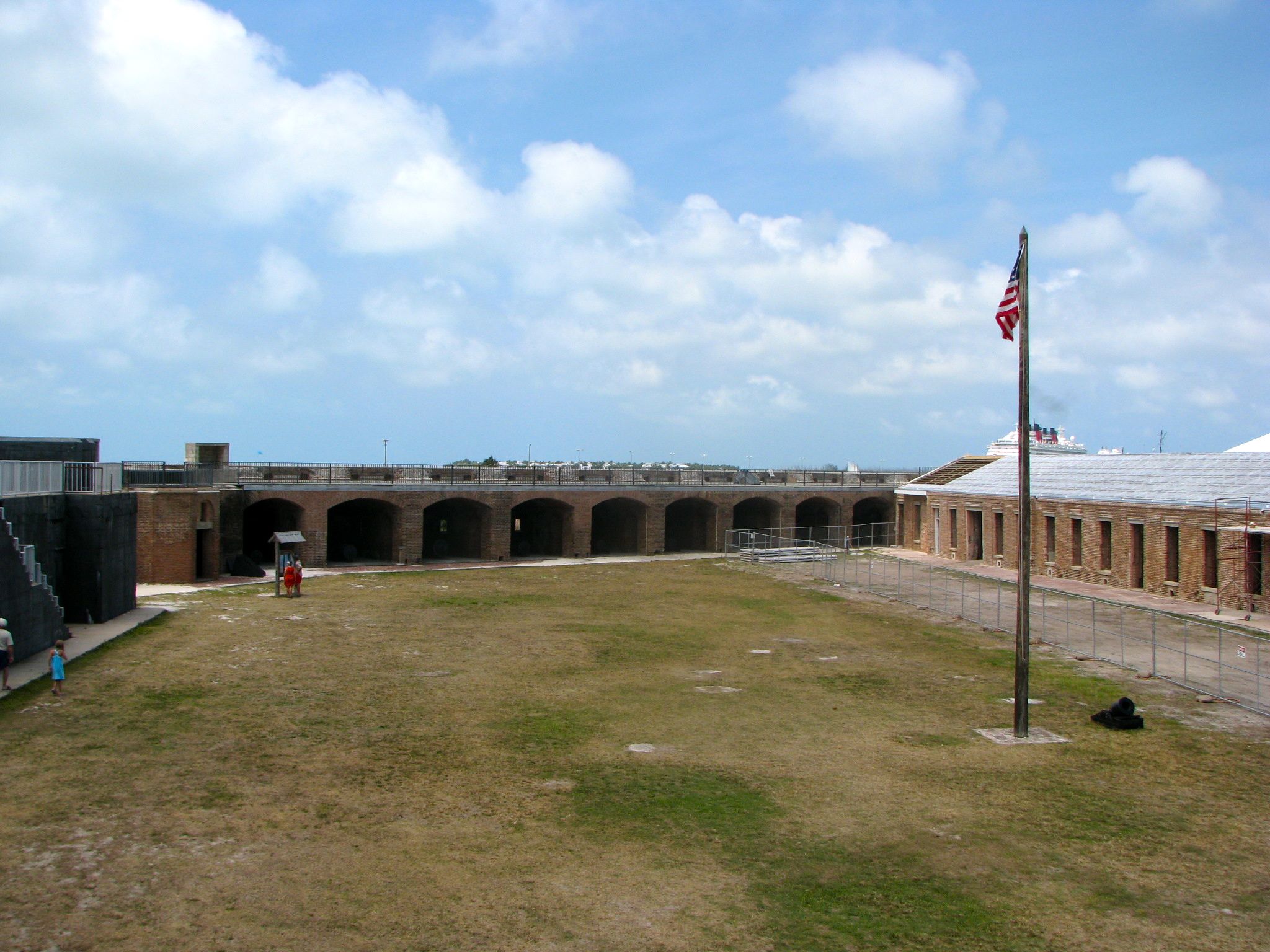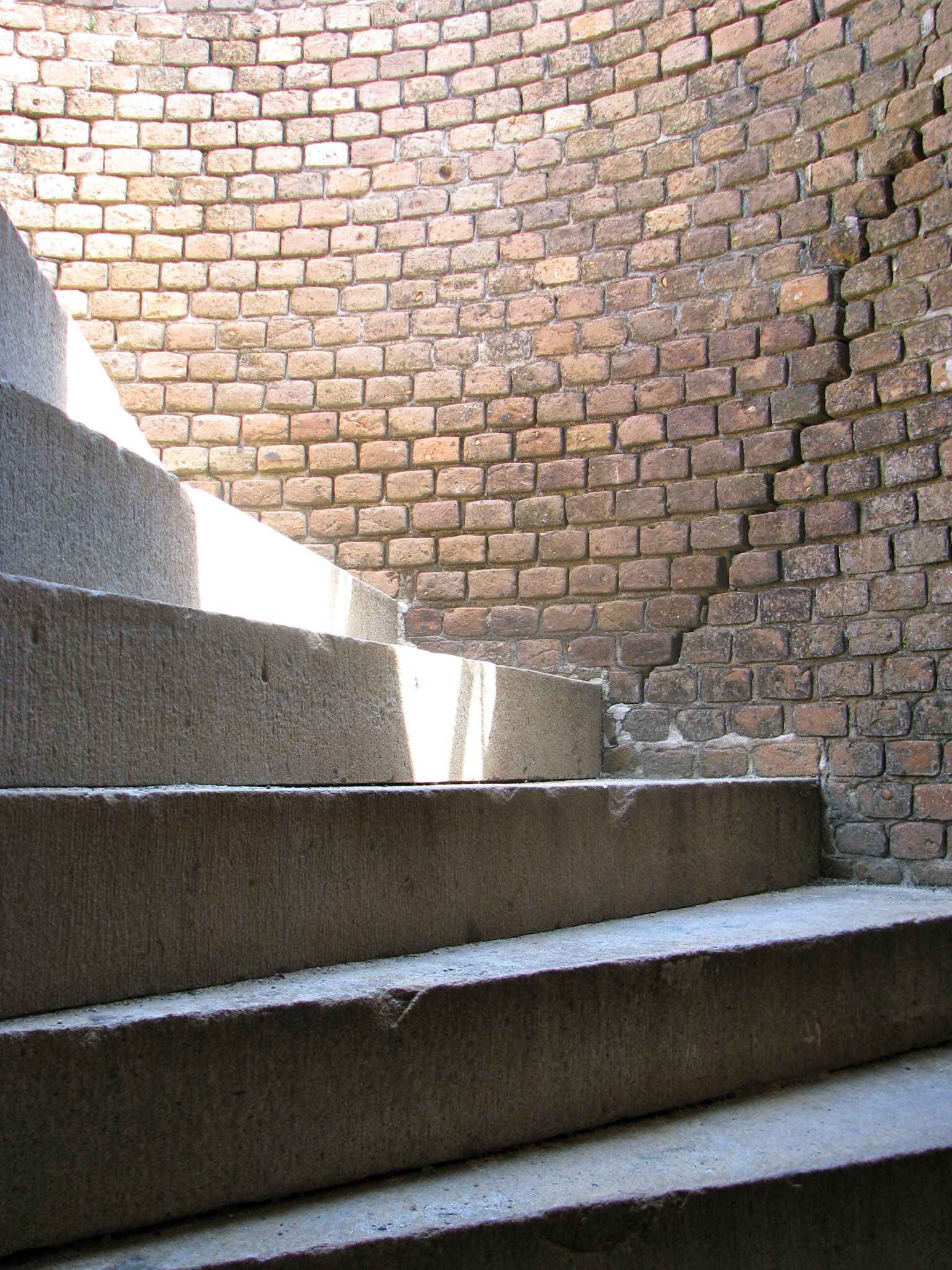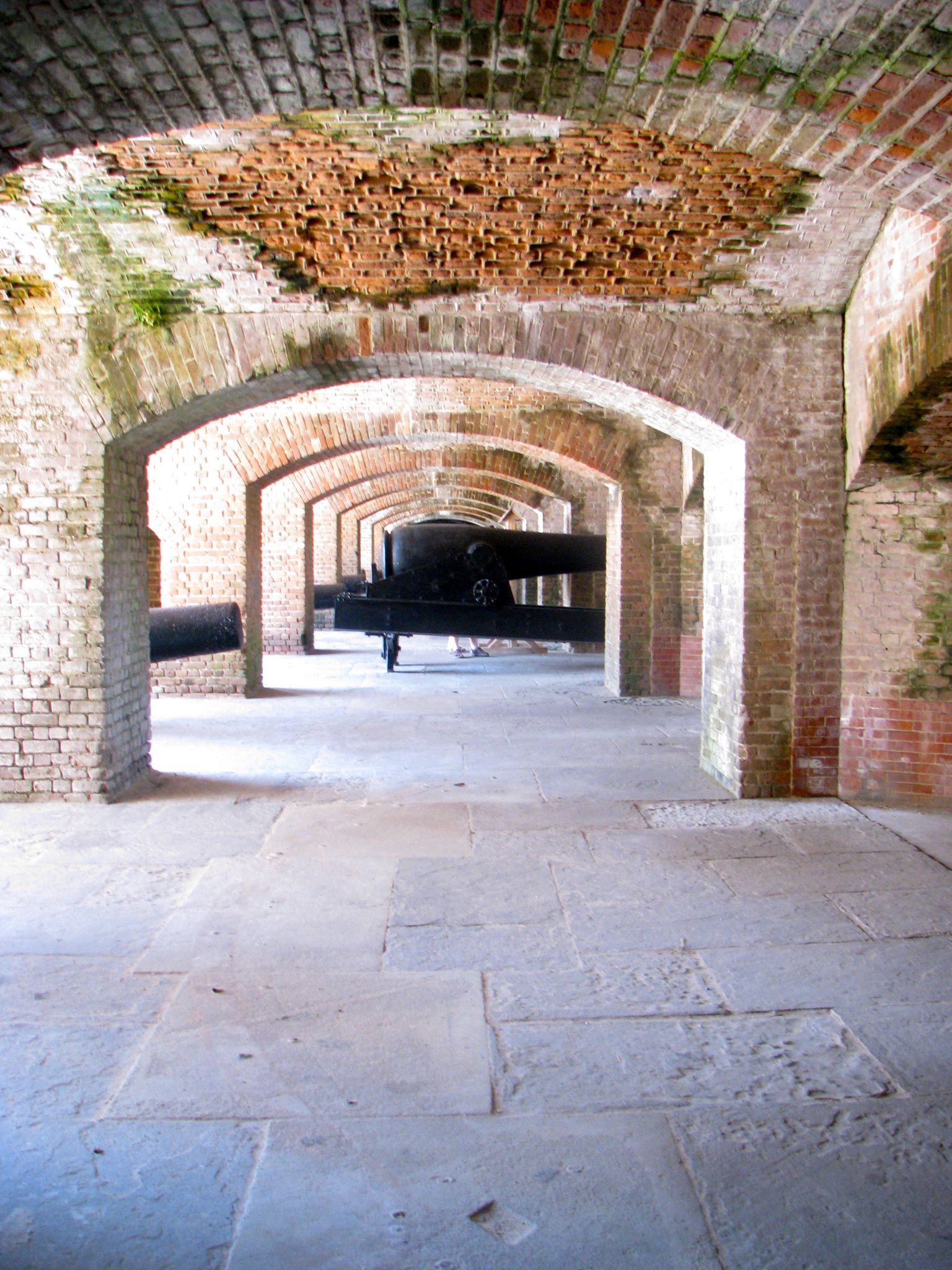Key West, Florida (April 2009)
Fort Zachary Taylor (map) began its service to the country as one of the Third System coastal fortifications constructed in the wake of the War of 1812. The United States determined that it would be prudent and worthwhile to make their port cities less vulnerable to enemy invasion. This lesson had be learned when the British sailed up the Chesapeake Bay and the Potomac River. They attacked the young nation’s capital city. There they burned several important buildings including the White House.
Key West became a natural site for one of those defensive masonry structures. It sat directly astride a vital passageway into the Gulf of Mexico. They calculated correctly that the Straights of Florida could be blocked rather effectively if they could coordinate the efforts of defensive fortifications at Key West and the Dry Tortugas (see my Fort Jefferson page). Florida gained statehood in 1845 and construction began in earnest that same year. President Zachary Taylor passed away in office in 1850. Thus, they named the fort for him as a memorial.
Moat

Fort Taylor sat 1,200 feet away from the shoreline on an artificial island constructed specifically for this purpose. Most of this buffer has been filled in subsequently. However, a partial moat still circles the western half of the structure. A portion can be viewed in the image above.
At the time of its construction and during its early occupation, the only access to Fort Zach by land would have been via a wooden ramp that could be withdrawn during hostile activities. Attacks coming by sea would have been equally futile, to be met by three stories of swiveling cannons of punishing direct shots and hellish crossfire. The Army designed Fort Taylor to intimidate would-be foes, to appear so overwhelmingly formidable as to avoid a fight entirely. This tactic worked. Fort Taylor never sustained an attack.
Behind Enemy Lines

Ironically the military threat would come from within. Florida seceded from the Union and joined the Confederate States of America in 1861, leaving Fort Zachary Taylor in hostile territory as the Civil War began to convene. Realizing its vulnerability and having already lost Fort Sumter, the Union quickly fortified its presence at the fort and on the island. They held the fort for the duration of the war while wearily eying the residents of Key West with suspicion.
This action bedeviled the Confederacy and cost them dearly. Fort Taylor became the headquarters for the Union Navy’s East Gulf Coast Blockading Squadron which seized nearly 300 Confederate vessels attempting to run the blockade. The navy anchored captured ships next to the fort within easy range of a couple of hundred cannons. Running the blockade proved to be a risky business.
A Century of Service

While Fort Taylor served faithfully during the Civil War, its obsolescence had already been sealed. A new technology — rifled cannons — demonstrated that in battle at Fort Pulaski and other places. Masonry forts could not withstand repeated direct fire.
Construction removed the two top levels of the fort in 1889. Later the army built Battery Osceola and Battery Adair for modern warfare. The fortress served its country again during the Spanish-American war of 1898, and once again it acted as an effective deterrence. It fulfilled a similar role through two more wars until 1947. It served the United States Army for a hundred years until decommissioning.
Now a Park

Fort Zachary Taylor Historic State Park today comprises much more than the fort itself. In fact the preponderance of visitors head straight towards the nearby beach. They likely never glimpse the historic site as they drive to the parking lot and walk to the water. Once seaside they never pay it another thought. Of the hundreds of park visitors who came through the park’s tollgate, perhaps a dozen of them climbed around the fort during my visit. The average park visitor’s loss becomes your gain. You will have plenty of time to poke around quietly and at your own pace.
Restoration efforts seemed well underway. The barracks buildings on the back side of the parade ground couldn’t be accessed during my visit, with abundant signs of construction and rehabilitation. It felt gratifying to see such positive attention being paid to an important historical site. It will be preserved it for future generations. One wouldn’t ordinarily expect to see that amid the live-for-today visitors flocking to Key West.
Readers who have an interest in forts might also want to check my Forts, Fortresses and Fortifications page.

Leave a Reply